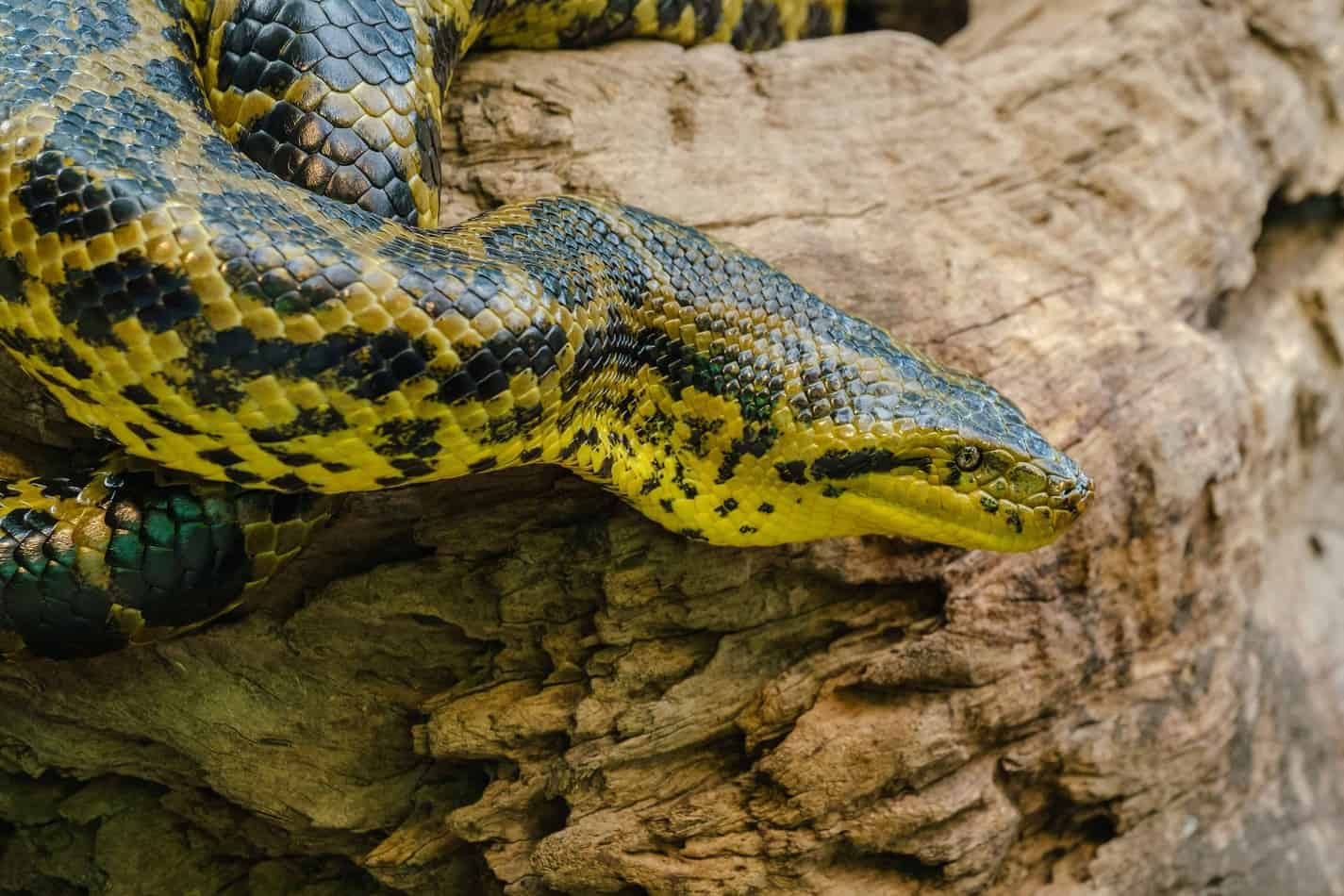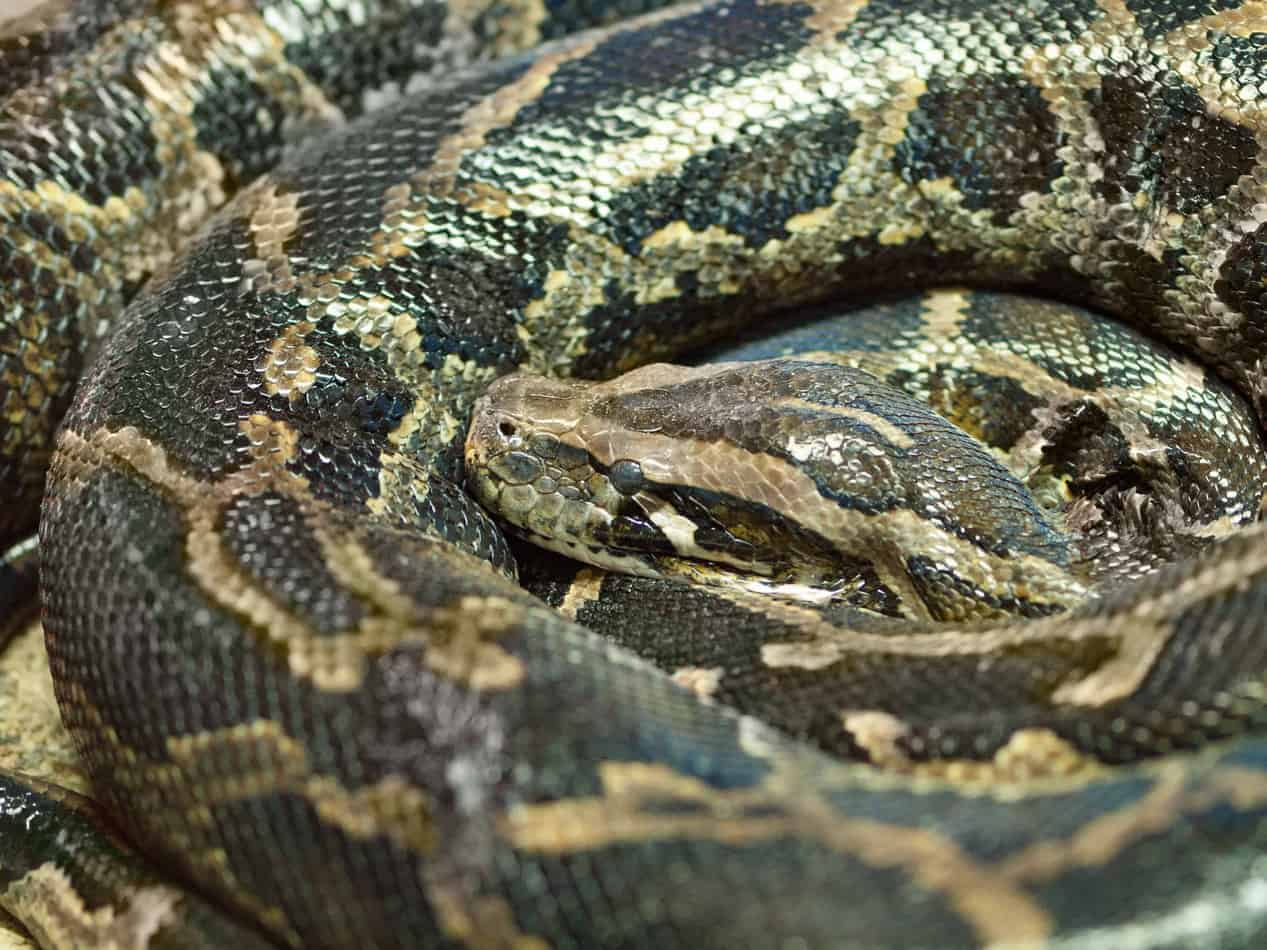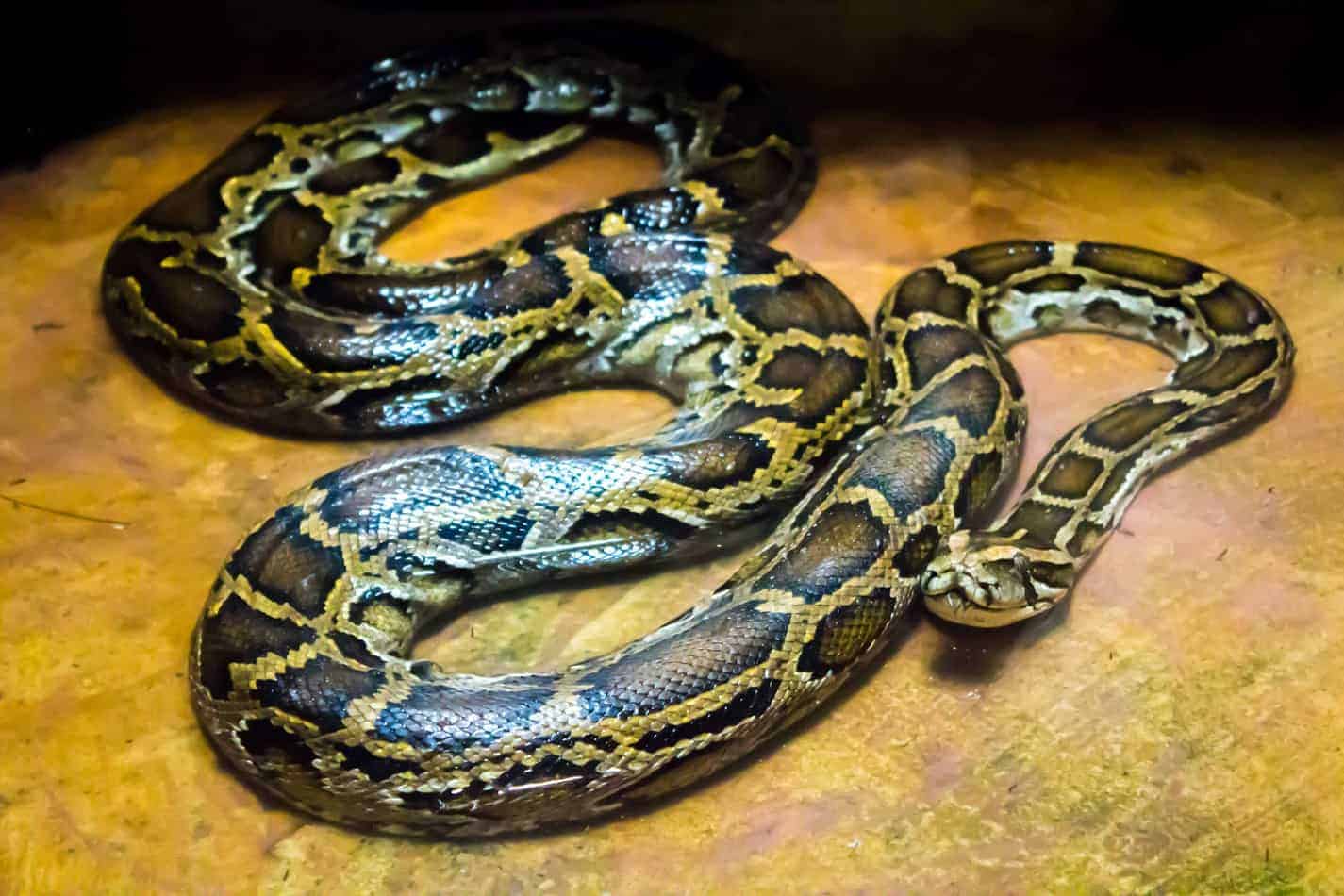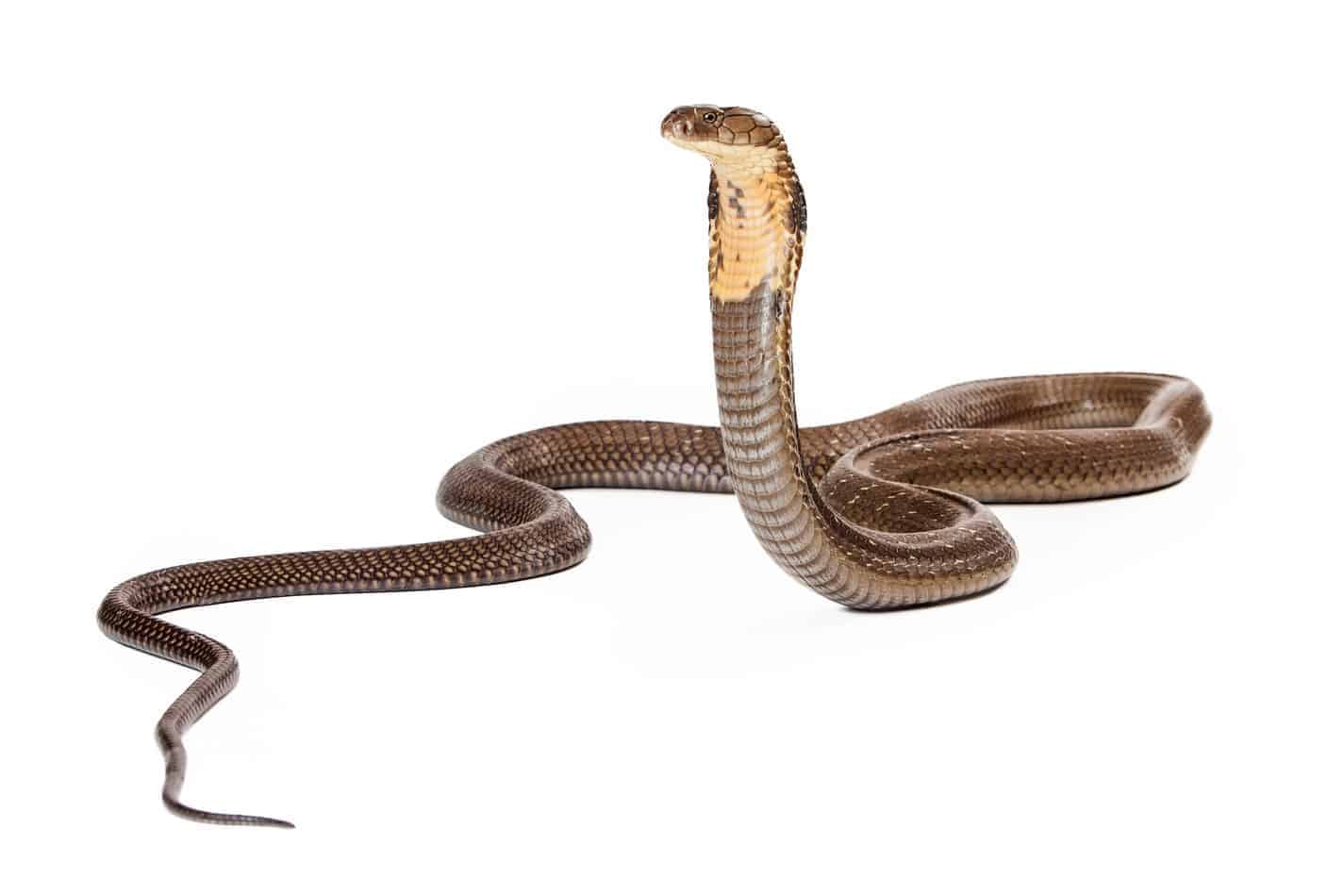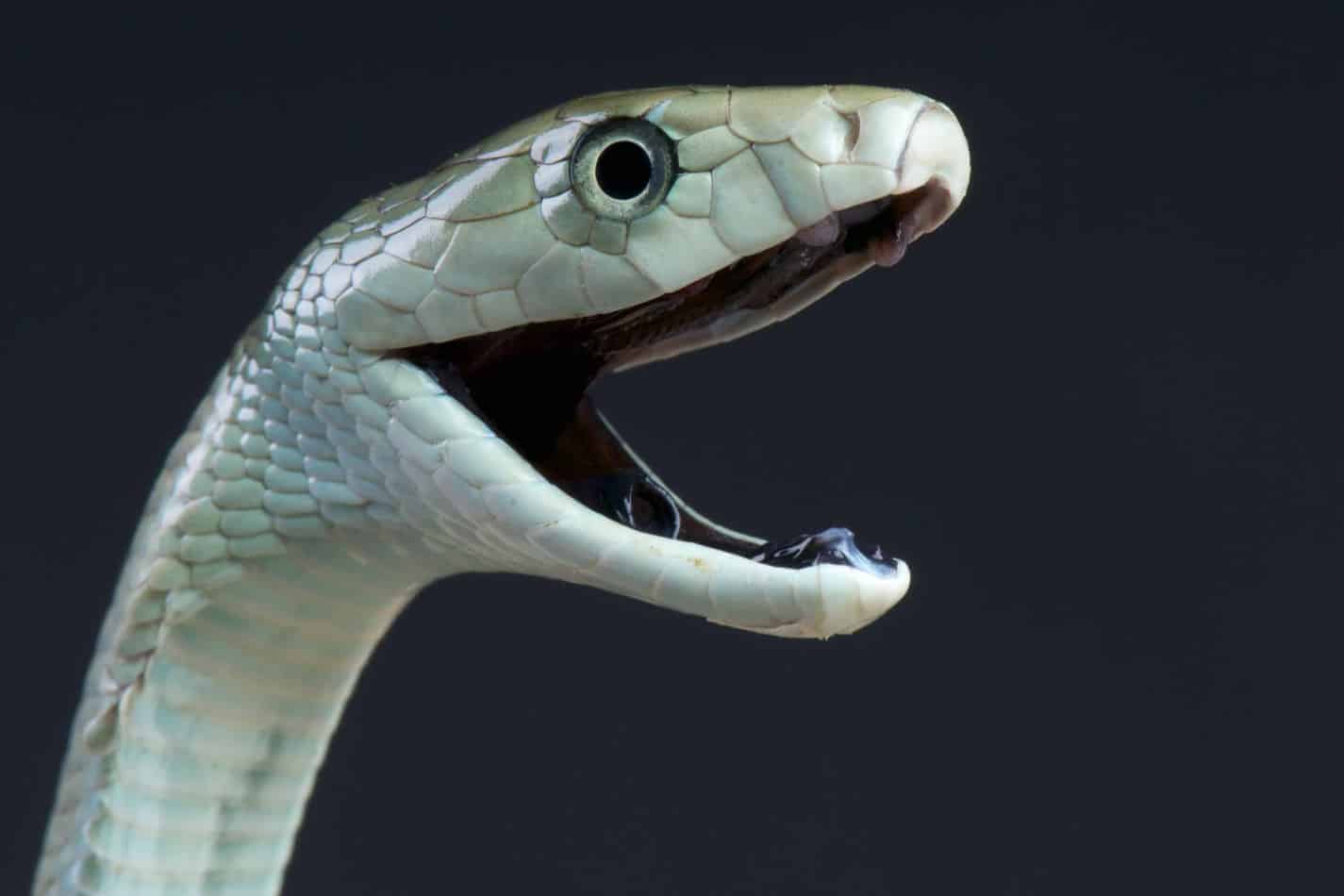The Biggest Snake in the World (with Facts and Pictures)
Recently, I wanted to know what the biggest snakes in the world looked like, and what species they were. I did some research, and this is what I found.
So, what is the biggest snake in the world? The biggest snake in the world is the green anaconda. This is based on the average length and weight of the snake. This snake is on average 21 feet in length and can weigh up to 500 pounds. Green anacondas are native to South America and live most of their lives in the water. The green anaconda is sometimes referred to as the common anaconda or water boa.
The green anaconda is massive and deadly. It has an impressive speed of attack and often lurks to attack nearby prey, ready to strike at any moment.
Appearance of a Green Anaconda
Green anacondas are, as the name hints, green in color. The scales are a dark, forest or olive green with round dark spots patterned around the body. These spots are more like giant circles and can either be black or a darker shade of green. They are sometimes bordered with a black color.
The belly of this snake is either a lighter green or yellow. It is often flecked with black on its stomach.
Green anacondas have their eyes and nostrils located on the top of their heads. This is because much of these snakes time is spent in the water and this allows the snake to see and breathe while being submerged.
As the biggest snake on the planet, these snakes are enormous. The average length of a green anaconda is about 21 feet. There are even reports of green anacondas being up to 29 feet in length but this is hard to verify. The average weight for this kind of snake is around 500 pounds. There are accounts of a green anaconda weighing over 550 pounds.
Green anacondas will continue to grow longer and longer as they age and continue growing well into adulthood.
In addition to the weight and length, these snakes are very wide around. They have a girth of about 12 inches.
Females often are bigger than their male counterparts, as is typical with many snake species.
There are a lot of disputes on whether this breed of snake is really this large or not because they are hard to catch and come from a remote location. Because these creatures live near the Amazon or near swamps, bigger snakes in the green anaconda family could exist.
Green anacondas have 4 rows of top teeth. These teeth are to help swallow prey whole by gripping on. There are 2 rows of bottom teeth to assist as well. Anacondas are not venomous and their teeth are primarily used for holding down prey and scooting the constricted animals into their stomach.
All in all, this paints a pretty scary picture. A green anaconda is definitely not something that you would want to come across in the wild.
Diet: What the Giant Green Anaconda Preys On
Because these snakes are much, much bigger than the average snake, they don’t feed on mice. Most of a green anaconda’s diet is made up of wild pig, large fish, birds, capybaras, wild dogs, tapirs, caimans. They can even eat the occasional jaguar if it stumbles onto its path!
Green anacondas are constrictors. They strike quickly and wrap their bodies around there prey to suffocate it. If the green anaconda is in water when it attacks, it may also drown its prey.
When the prey is dead, that is finally when they snake will eat it. With animals like tapirs and jaguars, its hard to swallow in just one bite, but that is just how the anaconda will eat it.
Because of its large meals and slow digestive system, a meal this big will take weeks to go through the snake’s body. Green anacondas will only eat every few weeks or maybe once a month in the wild.
The large size of these snakes make it hard for the snake to travel so instead of going on long hunts, green anacondas will wait in the water, eyes and nostrils on the surface, camouflaged. When an animal comes to the water to drink, that is when the snake will pounce on its meal.
Attacks on humans are not common because of the location of these snakes. Though it is possible that an anaconda could eat a person, it is not probable. Most reported attacks are because a human was provoking the snake.
Green anacondas that are kept in enclosures, such in zoos, eat rabbits and large rats. The Smithsonian Zoo feeds its green anaconda about once a month.
For those who are brave enough to keep a pet anaconda, the food demand is much higher than the average pet snake. This requires pre-killed rabbits, large guinea pigs, and jumbo rats.
The eyesight of an anaconda is not great. They are mainly nocturnal and are able to hunt well because of their heat-sensing pits. Instead of seeing their prey, they are able to use this heat to pick up on nearby animals.
Even though the green anaconda is nocturnal, it has been known to hunt during the day. If the snake is looking for something to eat, it will eat at any time, especially because they go so long between meals, and because they have such a large body to eat for.
The Habitat of the Green Anaconda
These creatures are found in South America. The countries green anacondas live in are Brazil, Trinidad, Paraguay, the Guianas, Peru, Ecuador, Venezuela, and Colombia. They are typically found east of the Andes mountains.
Because they are heavily aquatic reptiles, green anacondas usually live in swampy areas, where they can submerge most of their body. They like the marshy areas of the Amazon.
Swamps are not the only areas in which this snake will live, it will live near rivers, basins, marshes, lakes. Basically anywhere with slow-moving water.
The reason that these huge snakes like to live mostly in the water is mainly due to their massive size. It is hard for them to move quickly across dry land with all that mass and length.
They are able to move much more slyly and quickly when they are in the water. Anacondas have made evolutionary adaptions to suit the water environment.
Because much of their life is submerged in water, they are often referred to as water boas.
Murky water is the best place for one of these creatures to live in because it helps conceal their body. This helps to land prey because if they are still enough, it is as though they are invisible.
In this respect, they look a lot like an crocodile, with just the head and eyes visible, however, the parts of their body do not float.
Green Anaconda Reproduction
The reproduction is another unique aspect of these snakes,
Starting at the beginning, mating season approaches in the springtime, usually from March to May.
Females will let out pheromones, a chemical released to help males find and mate with the female. Many male anacondas might find this trail and attempt to mate with just one female. When this occurs there might be a “breeding ball.” When this happens, a sort of frenzy begins.
There are many snakes that are in this ball, as they are wriggling and wrapping themselves around the female. As many as twelve male snakes can be in this ball, all attempting to copulate with the female.
This “breeding ball” can last as long as 4 weeks. Many snakes have gotten the chance to impregnate this one female in a wrestling-style manner. This mating usually occurs in the water.
The reports of cannibalism is higher in females. Some scientists think that this higher rate is because females are hungry after mating and are usually bigger than their male counterpart. This might lead to the female eating her “baby daddy” or the male that impregnated her.
After the female is pregnant, she will be on her own. The gestation period for a green anaconda is about 6.5 months in length. After this time, the female will give live birth to 24 – 30 babies. The number of babies born at one time can be up to 100, but that is very rare.
A female can lose up to half of her weight after giving birth to so many offspring.
After the babies are born, they are left on their own. They are born at about 2 feet – 3 feet in length (which is huge for most newborn snakes) and will be able to swim after a few months.
Many of these babies will not survive to adulthood because they will fall prey to other creatures. As they grow they become less vulnerable though. They also will have to hunt for themselves because there is no parental supervision and no one to assist. If a snake cannot hunt for itself, it will not survive. Most have a great instinct for survival.
Green anacondas have been said to reproduce in single-sex living environments. When there are no males around females can participate in something called facultative parthenogenesis.
This is a type of asexual reproduction and will not happen often. It is possible though, in some circumstances.
An anaconda will be able to reproduce typically at 4 years of age. This is with respect to their average lifespan of 10 years in the wild. In captivity, green anacondas can live up to 30 years of age.
Why Green Anacondas Are Not a Great Pet
You might be wondering if this ginormous, slithery creature is something you can bring home and keep and show to all of your friends. Unfortunately, this might not be such a great idea.
Even though the life expectancy of a green anaconda can be greatly increased by living in captivity, these creatures are usually not a good idea to have in a home.
Especially if you are a novice snake owner, an anaconda is not the pet for you. They have a lot of high demands that need to be met, including a massive space and terrarium, food supply, and attention.
First, their size requires huge living arrangements. As a youngling, one of these guys requires a 20 – gallon tank and will have to move to a bigger tank after a short period of time.
There needs to be a great amount of room in a home to even think about getting an enclosure big enough to house the worlds largest snake.
The enclosure itself should have a large water element, so the snake can properly regulate its body temperature and attempt to live as normal as a life as it would in the wild. This water will have to be cleaned regularly or it could become a cesspool for diseases.
The food demand will require a frequent purchase of bunnies, guinea pigs and rats. These should all be bacteria-free and pre-killed. Body weight will have to be kept on top of to make sure the pet is happy and healthy.
Honestly, most green anacondas that are kept in captivity today are either breed or in zoos. Some are even in rescues. If you are looking for a snake to keep in your house as a pet, it is highly recommended that you get a different one unless you are absolutely certain of your abilities to take care of an anaconda.
There also might be some laws out there for acquiring such a pet in your state, or areas in the U.S. unless you have a license of some sort.
For more information on how to keep a pet green anaconda, click here.
These anacondas are pricey, too. They can be anywhere from $800 – $1300. It may look cool in your house, but it still probably shouldn’t live there.
Cool Facts about the Green Anaconda
Now that you know these guys are the biggest snakes in the neighborhood, you might be wondering what some awesome facts about them are. Below are six fun facts you can tell your friends since you can’t reasonably keep one of these epic snakes in your room.
Fact #1: They have giant green fingerprints. The scales on the bottom of each snakes tale is different, unique to the individual. This is similar to how humans have unique fingerprints
Fact #2: They fit into the Boa family. Surprising, since they’re twice the size of most boas.
Fact #3: They are non-venomous snakes. This is probably a good thing, because something this massive and heavy probably shouldn’t be equipped with fangs and venom. That’s terrifying.
Fact #4: They’re loners. Green anacondas are cannibals and live a solitary life, except when it is mating season. You will never see them in pairs.
Fact#5: They are literally good swimmers. The scientific name of a green anaconda is Eunectes murinus which translates to “good swimmer” and “mice”, although anacondas do not eat many mice.
Fact #6: They are extra heavy. The green anaconda is twice as heavy as the reticulated python.
Now that you know basically everything there is to know about these giant snakes, you might be wondering what the other big snakes out there are.
The Reticulated Pythons Wins Second-Longest Place
This is the longest snake on the planet, besides the massive green anaconda. It is native to the Asian continent. Usually found in the southern regions of Asia. These pythons have a complex geometric pattern on its back. These shapes on the back resemble diamonds and are often bordered with near-black color.
These snakes are usually yellow or green with black and brown accents. Their color allows them to blend in with their environment.
These long snakes are usually about 22 – 25 feet in length. There have been reports of these snakes that are over 30 feet in length. They face the same scrutiny over their estimated size as the now-famous green anacondas.
These reticulated pythons are found in woodland, forested areas and near rivers in Asia. They are known to be highly aggressive. There have been more reports of these snakes eating humans than any other type of snakes, even though these snakes are non-venomous as well.
The main diet of a reticulated python includes the following specimens: deer, pigs, monkeys, birds, and smaller mammals.
These pythons lay eggs when it comes to reproduction and can lay up to 40 eggs at once.
Here is a link to an article to learn more about Reticulated Pythons.
Burmese Pythons Come Next in Line
The Burmese python is also native to Southeast Asia and is the third largest snake on the planet.
This snake as brown blotches all over the surface of its body, which
The average Burmese gets to 16.5 feet in length though there have been reports of 21 foot long ones. The females are not much longer but have more girth and thickness than the males of this breed.
The diet of one of these snakes consists of large birds, rabbits, rats, deer, pigs. After a large meal, it could go a month or two without eating. These pythons are more common now as pets, especially because they are non-venomous.
Burmese are considered vulnerable on the list of endangered species because they are killed for their skin or caught for the pet trade. They are also actually eaten by people, especially in China, which also has led to the population decline of Burmese pythons.
Here is a link to an article that can help you learn more about Burmese Ball Pythons.
Long Live the King Cobra
The King Cobra is the largest venomous snake in the world. King Cobras can reach up to 18 feet in length. Something that makes the King Cobra look so startling is the fact that it can “stand up” and reach eye level or a person.
These snakes have the power to raise 1/3 of its body off the ground. They also have a distinct “hood” that can flair out when approached.
They are not the most venomous but their venom is powerful enough to kill an elephant with one bite. This means that they would make a not so good pet.
They are native to Southeast Asia and are commonly found in India.
Their diet consists almost entirely of other snakes, hence the name “king” cobra. However, they also eat rodents when it’s convenient.
Here is a link to an article to learn more about King Cobras.
Finally, if you were interested in the exact opposite of these giant snakes, read on to learn about the smallest snakes in the world.
The Smallest Snake in the World
In 2008, a herpetologist named S. Blair Hedges identified a new species of snake as, in fact, its very own species and not a subspecies, and this snake is called the Barbados threadsnake. They are tiny.
If you want an exact description of how tiny these snakes are, they are 3 inches long, the longest being barely 4 inches, and they are the width of a spaghetti noodle.
They primarily eat bugs, as this is essentially the only prey they can digest. They are thought to be constrictors and completely nonvenomous, though it is hard to tell with their tiny size.
They are snakes, not worms. They have scales and slither and behave exactly like the giant snakes on this list, but they are about the size of your pinky.
Other Small Snakes You Can Actually Have as Pets
While the little threadsnakes are adorable, they’re not exactly pet material.
If you were looking for small snakes that make great pets, here is a list of smaller snake species and why they make nice pets (besides their size):
- Corn Snakes. These guys are about four feet long, on average. They’re great snakes for kids.
- Garter Snakes. Yes, the ones you find in gardens pretty often. They’re very domestic and very cute.
- Milk Snakes. These ones don’t drink milk, don’t let the name fool you. Milk snakes are 24-35 inches long on average (2-2.5 feet).
- Ball Pythons. Thse
are the all-time most popular pet snakes to own. Besides their convenient length of 2-5 feet, they are great at becoming accustomed to handling and they are very docile.
If you were looking for a giant snake and a little snake, now you’re covered as far as species go. But maybe you were curious about the world’s most venomous snake.
What is the World’s Most Venomous Snake?
While the jury is still kind of out on this one, the most venomous snake in the world is reportedly the Belcher’s sea snake. These guys are black and white and
These are sometimes called the “faint-banded sea snake”, as well. While they are potentially 100x more venomous than any other snake in the world, their bites are rare and happen mostly at the sea when fishermen accidentally offend them.
It takes a lot to get one of these skinny snakes to bite you, though. They are famously shy and we still are learning about them.
However, just because they are the most venomous snake in the world doesn’t mean they’re the most dangerous.
What is the Most Dangerous Snake in the World?
The black mamba is frequently credited as the most dangerous snake in the world, due to their extremely venomous and aggressive nature. They are also reported to be the fastest snake in the world, which makes them that much more scary.
They are not always black, contrary to their name. While some of them are a silvery black on top and white on the bottom, their other colors include olive, gray, and brownish. These deadly snakes get their frightening name from the all-black color inside their mouths.
In the end, the most dangerous snake is not the biggest or the longest and definitely not the smallest. It is the one that is agile and highly venomous, and isn’t afraid to use its weapons.
While snakes are fascinating creatures, we need to remember to give them the respect they deserve and stay out of their way. If you’re looking for a pet snake, get one that will be suitable for you, not just one to impress others.
Related Questions
What is the biggest snake in history? There was a prehistoric snake called Titanoboa that was said to be over 48 feet in height and way a ton and a half. This snake would have lived 60+ million years ago near Colombia. There are fossils that prove the existence of this snake, that would be much bigger than any snake we have on the earth today.
Can snakes eat humans?There are few snakes that are big enough to eat people and they are on this list. There, however, have been more reports that people have been eaten than are actually true. Sometimes, a snake might kill a human but cannot actually eat it.
Are bigger snakes more dangerous? Usually, the more dangerous snakes are venomous. Even though constricting snakes can cause harm, some breeds won’t attack unless provoked. Since most large snakes are non-venomous, they are considered less lethal than cobras, or the common copperhead snake, at least to humans.



